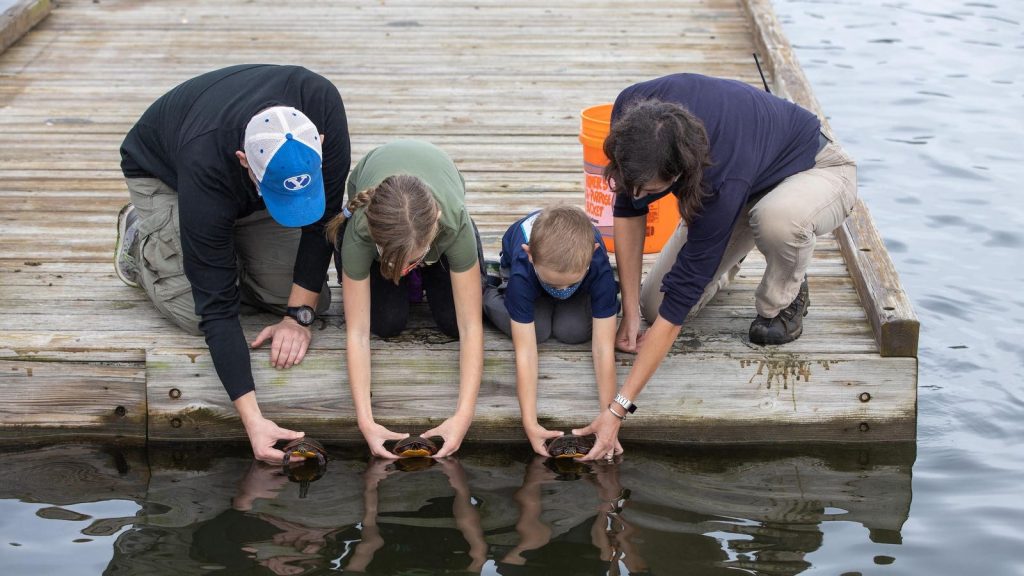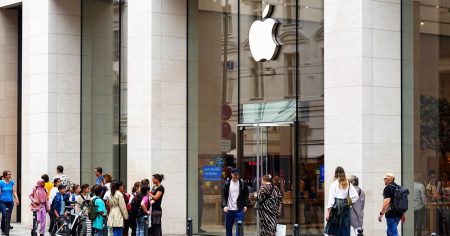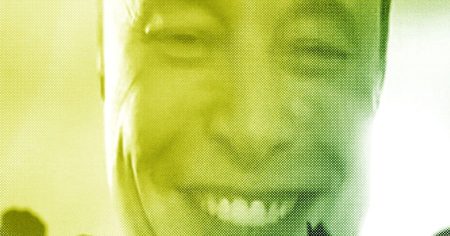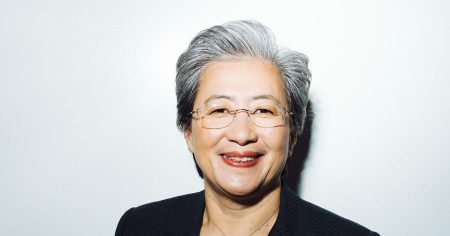Finding sustainable solutions in today’s challenging world requires a combination of multi-faceted expertise, deep and inclusive collaboration, and inspiring communications. In 2009, George Chmael II launched the sustainability-focused consultancy Council Fire with the idea of meeting these requirements by bringing all facets of sustainability together in one place and drawing upon the lessons of history and ancient wisdom to drive modern results. In this way, Council Fire aims to help find solutions by fostering holistic, inclusive, and respectful engagement from a broad spectrum of interests including government, business, and civil society.
I recently talked to George about the approach of Council Fire and in particular work with both public and private organizations. Council Fire is a public benefit corporation and an early adopter of the B Corporation framework (first certified in 2010) with the overall vision of restoring our environment, supporting communities, and building an economy that works for all. He emphasized to me that Council Fire’s work is guided by transparency, authenticity, and a quest for mutual benefits. Effective collaboration requires a commitment to long term relationships and building trust through a “listen first” approach. Council Fire’s specialists have strong ties to the communities in which they operate and engage deeply with stakeholders on behalf of their clients.
I very much appreciated George’s optimistic outlook on today’s challenges. While he emphasized two undeniable facts: climate change is a dominant force shaping our future, and economic disparities hinder our collective response to the challenges posed by it, he is focused on learning the lessons of history and concentrating on the opportunities ahead. We discussed how reforming markets and infrastructure can unlock multi-trillion-dollar markets. For instance, meeting the United Nations Sustainable Development Goals (UN SDGs) could unleash trillions in economic value and generate hundreds of millions of jobs within this decade. And, while mobilizing political will and resources to realize these prospects remains a challenge, he pointed to signs of progress and cited the Inflation Reduction Act in the United States as a step in the right direction.
One thing that came through in our discussion is that Council Fire’s approach is holistic, and it views success through economic, environmental, and social lenses. The company’s ethos is “redefining profit”, emphasizing that true success hinges on optimizing outcomes across these three dimensions. While the consultancy originally started with a reputation for environmental policy expertise, it has always guided clients to focus on addressing broader economic and social outcomes. Post-COVID, Council Fire has been greatly encouraged by the growing number of clients who are being much more holistic at the outset of their sustainability journey.
We in particular discussed Council Fire’s work with the Maryland Port Administration (MPA), and George illustrates how this engagement integrates technical, environmental, economic, and social aspects, with the MPA seeking mutual benefits for all stakeholders and the environment while pursuing the economic objective of driving waterborne commerce for the State of Maryland.
Below is an edited excerpt from our discussion.
Christopher Marquis: It is interesting you focus a lot of governmental and public sector work, which is a bit different than other sustainability and social impact firms. Can you share a bit about how these projects may differ from private sector work and illustrate with a specific project?
George Chmael II: We’ve always recognized that all sectors have a major role to play in transforming society and achieving a more sustainable future. As such, Council Fire has worked with a wide range of organizations including private sector companies, public interest groups, government agencies, investors and philanthropy. The type of organization we work with doesn’t change our value proposition or the services we provide. We focus on delivering sustainability strategy and guidance, facilitating collaboration, and providing storytelling strategies that drive local economic strength, healthy environments, and thriving communities. In large part, governments still set the policies and frameworks within which our societies operate so influencing these to facilitate more sustainable outcomes is fundamental to systemic change. History has clearly demonstrated that no one sector can carry the burden of driving the needed improvements, especially in the increasingly limited time we have to act. Of course, governmental organizations come with their own unique structures and sources of funding but that uniqueness can create wonderful opportunities at scale.
Marquis: One thing that stood out to me is the complexity of these projects and multi-stakeholder nature. Can you say more about how you approach bringing diverse stakeholders onboard? (e.g. at risk communities, federal and state governmental agencies, etc)
Chmael: This is one of the ways that we feel Council Fire is truly unique. Our focus on collaboration and engagement is grounded in bringing everyone to the table, working together transparently and authentically, and focusing on finding mutual benefits. Often, our engagement specialists themselves have strong ties to the communities in which they work in addition to extensive expertise in collaboration design and execution. This work demands a long-term commitment to lasting and honest relationships – like any valuable relationship, mutual trust is built over time and supported by transparency and a “listen first” approach. We’ve been doing this kind of work for decades in locations all over the world. Done well, the results are amazing and can change the trajectory of social systems.
Marquis: One particularly challenging aspect to me of the MPA work is that it combines both technical and environmental aspects such as addressing contaminated materials, nature (wildlife refuge) and also human/social aspects (at risk communities). Can you say a bit about how you addressed those different aspects, especially the human/social ones?
Chmael: First off, it’s important to note that the MPA work continues to this day. It’s an ongoing relationship between the MPA, communities, Council Fire and many other stakeholders. The issues are complex and the infrastructure investments run into the hundreds of millions of dollars. Maintaining the nearly 130 miles of dredged channels to allow ships to call on the Port of Baltimore is a massive undertaking involving, as you said, involving technical, environmental, economic, and social aspects. We take the long view and find solutions that provide equitable benefits for all stakeholders. With our assistance, the MPA has been dedicated to a stakeholder-first approach for more than twenty years. It’s a great story of our joining forces with a visionary public servant at the start, building an inclusive process in which stakeholders and experts work together to meet everyone’s core needs. The Port needs to dredge its channels for safe ship passage to provide all the associated economic and social benefits and communities need opportunities, a strong local economy that works for them, and a clean environment in which to live. A healthy Chesapeake Bay supports a healthy economy and thriving communities.
From that process, you have results like the Paul S. Sarbanes Ecosystem Restoration Project at Poplar Island, a global model for island and habitat restoration combined with dredged material management, or the Masonville Cove project that combined a massive environmental clean up, a near Net-Zero environmental education center, and port facilities to become the Nation’s first Urban Wildlife Refuge Partnership. By fully leveraging the opportunities presented by its extensive operations, the MPA drives numerous economic, environmental, and social advancements. The agency is the leading creator of wetlands in Maryland and a leader in Beneficial Use, the practice of using dredged material to restore ecosystems. Their sites are attracting scores of wildlife, including rare birds and the only pair of nesting bald eagles in the highly urbanized City of Baltimore. They have implemented state-wide education programs in classrooms, Port facilities, and online to engage youth and encourage learning in the STEM fields and create career pathways in maritime transportation and logistics. Addressing environmental justice concerns and providing equitable access to their resources are both cornerstones to the approach. They’ve reconnected disadvantaged communities like Masonville to the water. Their educational programs focus on those most in need. To date, 63% of the classrooms the Port has engaged with are from Title 1 schools. They’ve also created a Spanish-Language environmental education team, run a youth birding week in Baltimore Harbor, and host a Urban Conservation and Education internship for college students from Historically Black Colleges and Universities (HBCUs). It’s an incredible example of the government meeting its economic-focused statutory mission while also bringing assets to the communities that need them the most.
Marquis: Communication and storytelling is essential to getting stakeholders onboard and also changing understanding of the importance of sustainability. Can you discuss how you approach this aspect of your work?
Chmael: Doing the “right thing” has tremendous value but is rarely enough to carry the day. Regardless of whether you are operating in the for-profit, governmental, or non-profit sphere, communicating results brings attention and support to an organization’s efforts and inspires others to take the actions needed to drive systemic change. Making a community stronger or an ecosystem more resilient is critical, but it’s in sharing that story that the work takes on life beyond the four corners of the project, leading to more desired outcomes – land or species conserved, people helped, economies bolstered. Increasingly, our clients are engaging our storytellers and reaping the benefits of long-term improvements.
Beyond individual clients, we must transform the global dialogue around society’s massive challenges. Two realities are now undeniable: climate is the dominant driver of our future on this planet and inequitable economic systems prevent a unified response. Our existence depends on our ability to communicate this effectively, to change the narrative of climate change and social inequities. Extreme weather is already dramatically impending human well-being and consuming resources that are already in short supply. Racism costs the US economy nearly a trillion dollars each year. The good news is that fixing these challenges presents the greatest economic opportunity of our time. Multi trillion-dollar markets in transportation, food, infrastructure, energy, finance are all in play. A recent study found that meeting the UN SDGs will unlock trillions in value and create hundreds of millions of jobs this decade. Those benefits are ours with modest investment, especially when compared with the cost of climate change. We need to be able to shift policies and governance structures, realign incentives, and change human behavior. Communication and storytelling unlock our ability to drive those changes. And we’re all in – not only are we providing those services to our clients but we’ve also launched an initiative with a fellow B Corp, Hemming House Pictures, specifically focused on using the power of storytelling to bring to life the challenges and opportunities associated with climate change and social inequities. Our first project is to produce a film leveraging the groundbreaking scientific work and message of hope that embodied the life of the “Godfather of Biodiversity,” Dr. Thomas Lovejoy.
Marquis: While some aspects of the project may be considered “done” such as perhaps many of the physical components (e.g. building something), others such as nature and human seem like they would require plans and maintenance ongoing. Can you say more about this project/intervention has evolved since it started?
Chmael: The vast majority of our client engagements are not transactional, they’re relational. We work with many of our clients for extended periods for exactly this reason. For example, we’ve been working with the Environmental Defense Fund and the MPA since our inception, growing and evolving with them along the way. These relationships are about trust. We trust our clients are committed to doing the best they can for their organizations, their people, their environment, and the communities in which they work, and our clients trust us to provide expertise and guidance, ensuring they have the best information, processes, and assets upon which to pursue economic, environmental, and social success. This approach has served as the cornerstone of our shared successes that stretch from our local communities to the farthest corners of the planet and we’re committed to doing everything we can to grow our impact.
Read the full article here










